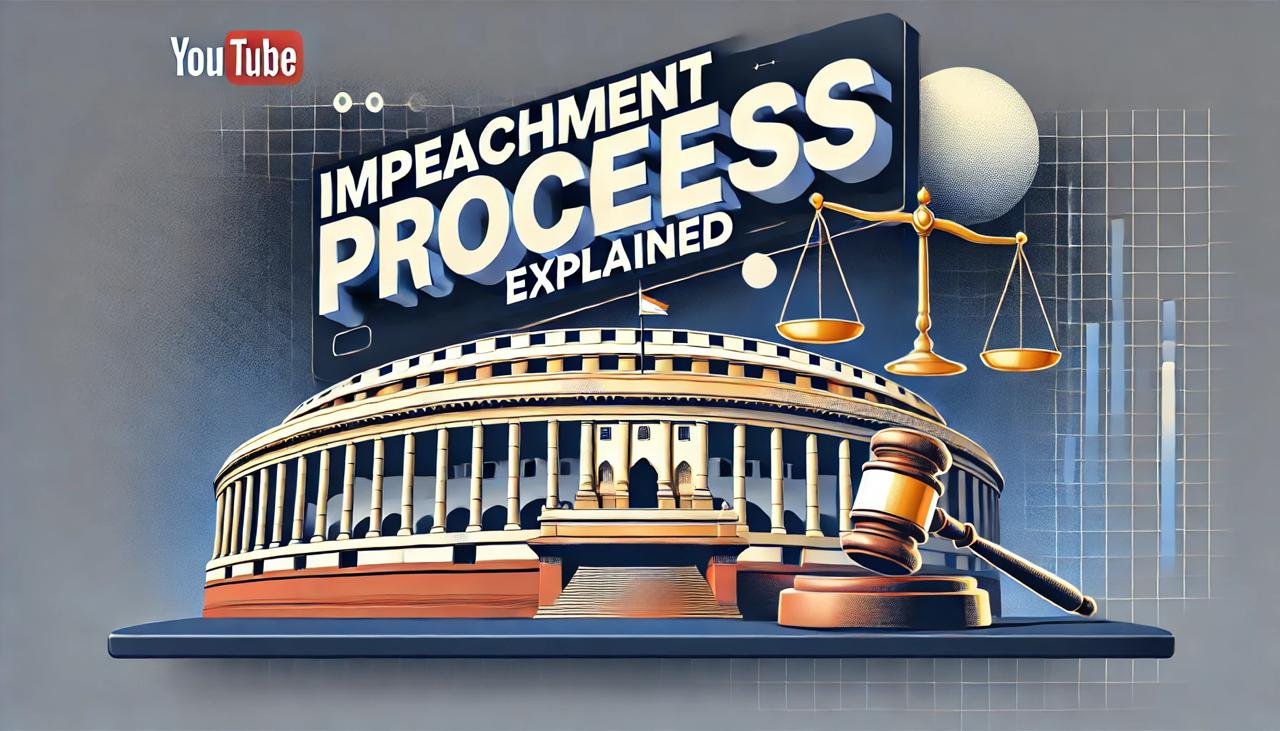

Impeachment Process In India Click Here To View Video
The impeachment process in India is a critical constitutional mechanism that ensures accountability of the highest offices of the country. It applies to the President of India and judges of the Supreme Court and High Courts, among other constitutional authorities. This rigorous procedure protects the integrity of these positions while ensuring they are not misused.
The process for impeaching the President is outlined in Article 61 of the Indian Constitution. The President can only be impeached for a violation of the Constitution, though the term is not explicitly defined in the Constitution.
Initiation:
The process begins in either the Lok Sabha or the Rajya Sabha.
A notice of impeachment must be signed by at least one-fourth of the total members of the originating House and submitted to its presiding officer.
A 14-day notice is then circulated to all members of the House.
Investigation:
The charges are investigated. If the originating House is satisfied with the evidence, it debates and votes on the motion.
Voting:
The motion must be passed by a two-thirds majority of the total membership of the originating House.
It is then sent to the other House, where the same process is repeated.
Removal:
If both Houses pass the motion by the required majority, the President is considered impeached and formally removed from office.
No President of India has been impeached so far. This highlights the difficulty and the gravity of the process.
The removal of judges of the Supreme Court and High Courts is governed by Article 124(4) and Article 217(1)(b) of the Constitution. Judges can be removed on grounds of proven misbehavior or incapacity.
Steps in the Process:
Initiation:
A motion for removal can be initiated in either House of Parliament.
It requires the signatures of 100 Lok Sabha members or 50 Rajya Sabha members.
Inquiry:
A three-member committee (comprising a Supreme Court judge, a Chief Justice of a High Court, and a distinguished jurist) investigates the charges.
If the committee finds the judge guilty, the motion is taken up for debate.
Voting:
The motion must be passed by a two-thirds majority of the total membership of both Houses.
Removal:
If the motion is passed, the judge is removed by the President of India. Notable Cases:

Justice V. Ramaswami (1993): The first impeachment attempt in India. Though the motion was brought to Parliament, it failed due to abstentions.

Justice Soumitra Sen (2011): He resigned before the Lok Sabha could vote on his impeachment. Other Constitutional Authorities
The process for removing certain other officials, like the Chief Election Commissioner (CEC) and the Comptroller and Auditor General (CAG), mirrors the process for judges.
Significance of the Impeachment Process
The impeachment process is a quasi-judicial mechanism that blends legal scrutiny with legislative accountability. It ensures:
Checks and Balances: Prevents abuse of power by high officials.
Independence of Institutions: Provides constitutional safeguards to prevent arbitrary removal.
Rarity of Use: The stringent requirements ensure impeachment is used only in cases of grave misconduct.
Ambiguity: Terms like “violation of the Constitution” and “proven misbehavior” lack clear
definitions.
Lengthy Process: The multi-stage process can take a long time to complete.
Political Interference: There is potential for political bias in initiating or blocking impeachment motions.
The impeachment process in India underscores the importance of preserving the integrity of constitutional offices. By making it a rigorous and rare procedure, the framers of the Constitution ensured a balance between accountability and independence. While the process has not yet led to the removal of a President or judge, it remains a powerful tool to uphold the rule of law and democratic values in India.
Copyright 2023 Lawshrine.